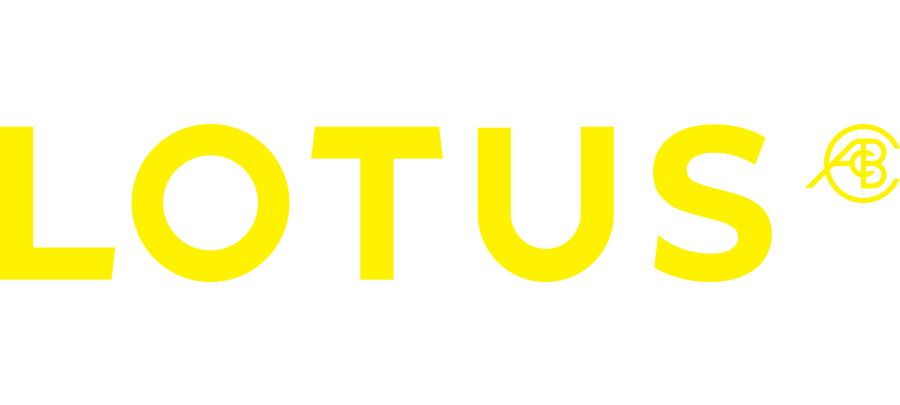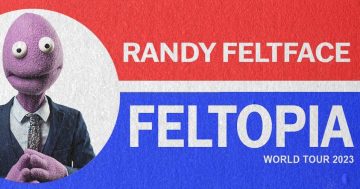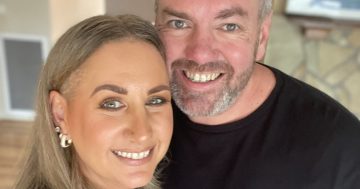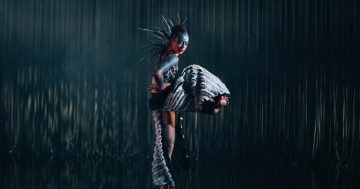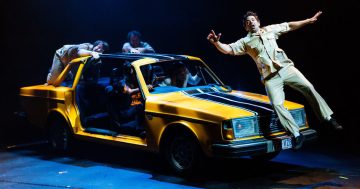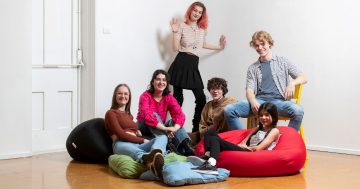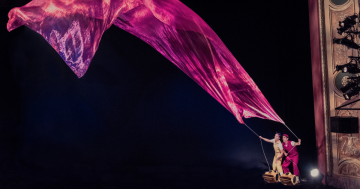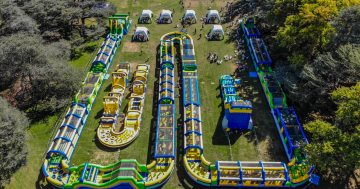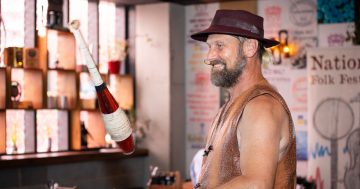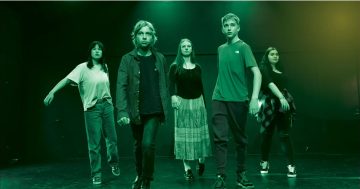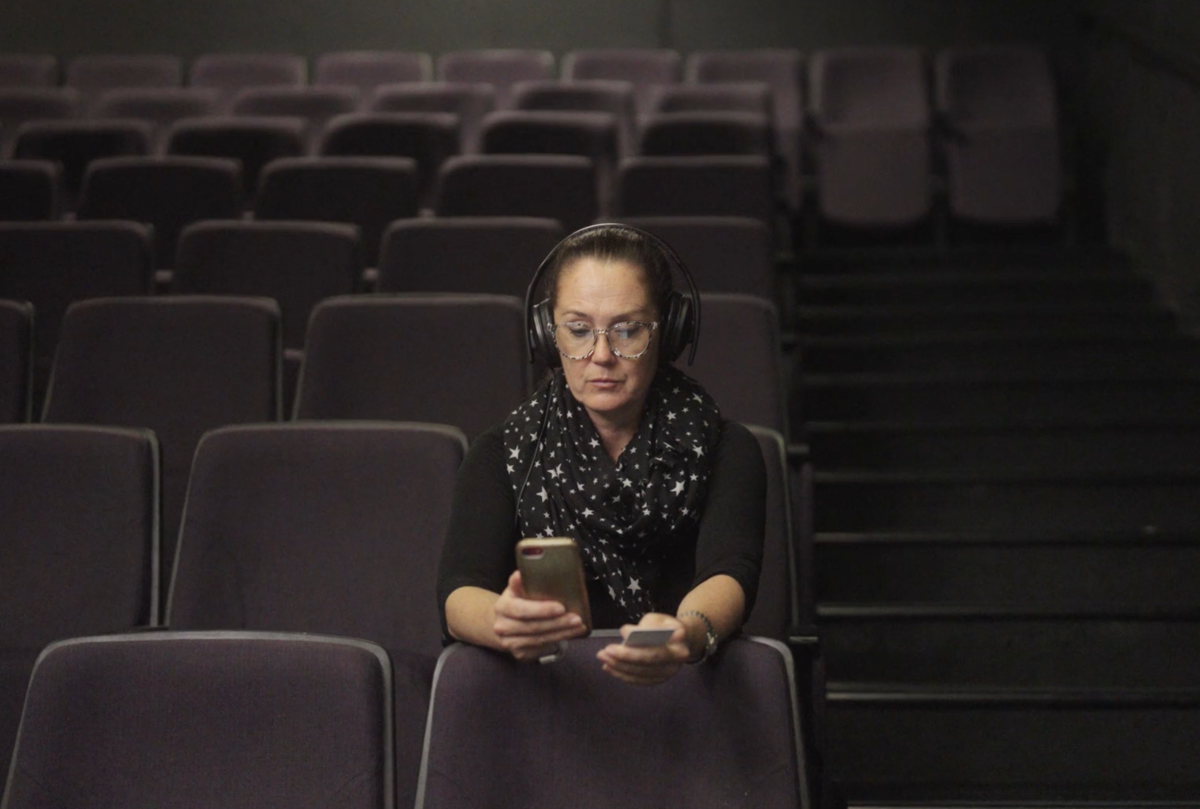
Liz Lea is an audio describer for contemporary dance and theatre. Photo: Screenshot.
“There are four dancers standing in a line to the left of centre, from front to back. They walk towards each other. They reach out to each other and hold each other’s hands. One dancer’s leg flies high through the air and they are lifted up around the shoulder of a male dancer.”
You can almost see it, and that’s the idea.
Local dancer Liz Lea has been involved in a number of arts organisations over the years and, in 2020, helped found ‘The Chameleon Collective’, which is designed to help those with disabilities get into dance. Her latest effort is focused on including people who are blind or vision-impaired, as well as others with print, learning or other physical disabilities. She does this through ‘audio description’.
Media Access Australia describes audio description as the “auditory narration of visual representations such as television programs, films and live performances”.
“During gaps in dialogue, it describes visual elements such as scenes, settings, actions and costumes.”
You might have come across audio descriptions on DVDs and streaming platforms as a separate language track, but it is also used in cinemas and live performances. It’s the job of people like Liz to narrate what’s happening on stage to those who may be unable to see it.
“Ideally, you receive a brief of what’s going to happen and also watch rehearsals or a film of the show, but you have to wing it too because there might be a change on-stage,” she says.
This narration is broadcast through the theatre’s WiFi network and headphones to those who have opted to access the description.
“We just make sure everybody can hear.”
At the moment, volunteer audio describers from Vision Australia cover about 16 of the annual shows at the Canberra Theatre Centre, but rarely do these include contemporary dance “because it’s really hard to describe”. Liz says it’s still far from a “regular thing”.
“There is some demand, and I believe it’s growing as there’s more and more of an understanding that audio description and full accessibility is fundamentally necessary.”
Liz has devised a way to make it easier with a new audio description app called ‘ShowGO’.
It has already landed her as a finalist in the Australian Government’s ‘Accelerator for Enterprising Women’ grants program, designed to support and empower women to pursue entrepreneurship. She vied for $30,000 of funding during a Shark Tank-style pitch session on 29 November here in Canberra but lost to Alexandra Cannizzaro and her digital platform that allows supermarkets to on-sell surplus or rejected produce. However, Liz still got to take home $7500 “and a bag of goodies”.
A big part of Liz’s pitch was the two problems the app solves.
For instance, part of the audio description experience will often take the form of a ‘tactile tour’ before the show, where you can get a “feeling for the set and costumes”. But “it’s a lot of information to take in” and means you “might have to miss dinner with your friends or colleagues”.

Imagine having to describe what’s going on here. Photo: O&J Wikner Photography.
The app will roll all this information into pre-show notes that can be accessed at leisure days before the show.
“So you know that when the clown walks in, you have an idea of what they’re wearing, that they have a ridiculous hat on, and huge shoes, and so as you’re following the audio description of the show, you have all of this context to what’s being described.”
Then there’s the cost.
“Audio description costs a fortune,” she says.
“It takes a long time to do the prework for the descriptions, and then hiring the gear to make the descriptions possible is also prohibitively expensive.”
The app will negate a lot of this by putting all the “gear” in the person’s hand via their smartphone. All that’s required then is a pair of headphones, a robust WiFi network within the theatre, and – ideally – a closed-off bio box where the audio describer can do their work alongside the lighting and audio technicians.
Venues or companies would pay a subscription fee for the ShowGO service, ranging from $30 per month for hosting up to five shows annually to $65 per month for hosting up to 15 shows annually.
The app will soft-launch this Saturday (2 December) during ‘A Stellar Lineup’ dance event at the Canberra College Theatre. Liz hopes the technology will spread to other areas, including sports, galleries, museums, restaurants and places of interest.
“I have lived experience of chronic illness and post-concussion syndrome, so I’ve always been really interested in – and committed to – working within the accessibility fields,” she says.
“In our show coming up, we have dancers with Parkinson’s, dancers with Alzheimer’s, dancers who are deaf, and we even have a dancer who’s a wheelchair dancer. We are embedded in the need for greater access and accessibility because we’re constantly aware of it.”
Visit the Kickstarter Challenge website for more information on ShowGO.
